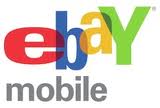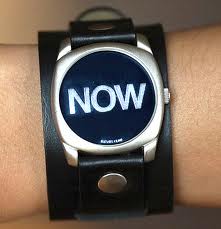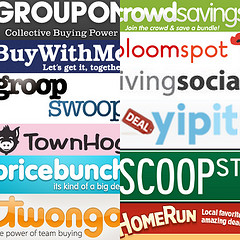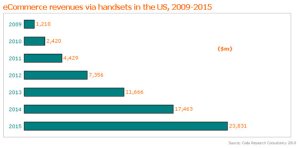[tweetmeme source=”WLLK” only_single=false]
Wilson Kerr (@WLLK) is a former Tele Atlas exec and started Location Based Strategy, LLC in 2007 to help clients harness the power of location. Contact him today to learn more.
_____________________________________
Last Monday, I attended an event at MIT in Boston. It was a standard panel-style presentation/discussion, with a moderator, sponsored by Nokia (thanks for the turkey wraps and little red gourmet cupcakes). It “sold out” in advance and I’d guess at least 200 people were there. It was, literally, standing room only.

Are Today's Agencies Enbracing Mobile?
Billed by organizers (Mobile Monday Boston) as a way for attendees to “learn the realities of mobile advertising”, the panel was stacked with ad agency people. Many attendees I spoke with saw this as a rare opportunity to hear directly from ad agencies, regarding their mobile plans. A finger on the pulse of those paying for the upkeep of the mobile heartbeat. After all, if these agencies have the ear of the brands, then knowing their mindset regarding tomorrow’s mobile spend is very important, as the collective “Mobile Industry” springing up around all this “potential” needs to get paid today.
The Year of Mobile, Every Year
With the general mobile advertising outlook over-ripe from 3 years of unrealized, predicted mobile spending ramp-up, this night had the potential to shed some real light on the future of mobile marketing, and, perhaps, the fate of many of the companies represented in the audience. With livelihoods literally depending on brands spending real money via the mobile marketing tools many in the audience had invested so much time and money in, it is little wonder the event sold out in advance.

The Auditorium Fills Up! It Was Standing Room Only.
The predictions about the mobile ad spend have been recently correcting downward, as most brands idle on the sidelines, in a wait and see mode regarding mobile. Many dabble in mobile banner ads, a few skin up and launch product-related iPhone apps, and most have plugged into the free social media machine. But the big money is still not flowing and there is a backlog of companies waiting for the faucet to be turned on.
Are Agencies Paving The Way Or Blocking Progress?
Disclaimer: I have long-suspected large agencies of stunting the potential of mobile marketing because they fear that tracking and reporting real results regarding converted sales could shine unwanted light on all the untracked bread-and-butter mass broadcast marketing they run via traditional media. So, this night I came prepared to have my mind changed and I really expected to see and hear the excitement agencies were passing along to their clients. Why else would they have signed up for this panel? I was ready to be convinced that my conspiratorial theories were wrong (or at least have my mind set at ease).
To set the stage, here is the actual verbiage used to promote the event:
_______________________
The Realities of Mobile Advertising
Mobile advertising is getting a lot of hype, but what are brands really doing in mobile today? What should we expect in 2011? Our panel will discuss the realities and answer questions like:
- How big is mobile brand advertising?
- How does mobile fit into the big picture for most brands?
- What are the hot issues for brands? Targeting? Buying? Ad formats? Measurement?
- How has Apple’s promotion of iAd changed the market?
- What are the opportunities for publishers and app developers?
Speakers:
Adam Towvim, Jumptap (Moderator), Brett Leary: VP/Dir of Mobile Marketing at DIGITAS, William Nann: Director, National Advertising Sales at Crisp, Brenna Hanly: Mobile Catalyst at Mullen, Jon Phenix: VP Sales, Nexage, and Stephen Bagdasarian: Digital Strategist & Mobile Specialist, Hill Holliday Advertising
______________________
This was a who’s who of Boston Ad Agencies and the purpose was to have them explain their individual or collective “realities” right there, live and in front of a room of mobile industry “insiders”. Kudos to Mobile Monday Boston for putting this together, by the way.
Sponsor Nokia Kicks Off
Sponsor Nokia opened the evening with a slideshow overview of their plans to re-take a share of the booming US smartphone marketshare they let slide by. They announced a $10 Million dollar developer contest designed to lure apple-addicted code writers their way.

The slideshow touted their global marketshare and reminded us all of the gazillion Nokia phones they sell. Despite impressions here in the US (caused largely by iPhone mania), they are a real powerhouse elsewhere. The new N8 just launched in the US and the Nokia team even had a fishbowl full of business cards collected, for the purpose of handing out two new phones at the end of the night to two lucky winners. Nothing turns heads like free phones as schwag. They even branded the nametags at the conference, making it look like 200 Nokia employees were in the audience. First time I have ever seen a logo on a nametag. Pretty smart, actually.
The guy next to me took notes about all this on his iPad, and even snapped a few pics on his iPhone, as did I. Nokia is well-positioned to make some moves and has a track record a mile long but, in the US, they have a long way to go.
Patterns Emerge

Top Boston Ad Agencies Address Mobile
Jumptap’s Adam Towvim was the moderator and did a good job all night. He kept the panel moving and asked the right questions. As the conversation flowed along, some clear patterns emerged.
The first was that fragmentation was generally viewed as a big problem in the mobile landscape and that it negatively impacted the ability of agencies to convey a concise strategy to their clients.
The second was that ad serving consolidation was needed to increase efficiencies, reduce redundancy, and allow the agencies to better know WHO was actually seeing the mobile ads and better-measure engagement, across all platforms. A tall order.
The various kinds of phones (feature phones vs smart phones vs “candy bar” phones) were mentioned as an additional challenge. Ad exchanges and buyside technology plays (to aggregate various ad servers) were also mentioned as welcome tools.
Sponsoring or branding iPhone applications was discussed as a way that brands could get involved, but it was noted (and generally agreed) that few agencies were adequately staffed up for this.
Brenna, the representative from Mullen mentioned that she worked on a crowded creative floor and only-recently heard mobile advertising even mentioned. She offered that only because the team had been shown a presentation on the potential of iAd had the topic even come up.
iAd was generally seen as a positive platform for creative to be conveyed on both mobile and on tablets, but soon the conversation shifted to the fact that Apple was wielding too big a big control stick and some brands were bailing out (IE Adidas).
The discussion was fairly interesting (and fair) but not very exciting. The focus seemed to be more about “glass is half empty” what-can’t-we-do problems with mobile reach and fragmentation. Branding apps and creative rich media used in addition to mobile banner ads were lightly touched on as positive. There was little “let’s dive in” energy and only a smattering of carefully worded cautious optimism. All evening, I had the nagging feeling that something was missing…what was it?
What Was Not Said
The time was 8:15 and the panel had been on stage for over an hour when, finally, it happened! Brett Leary from Digitas was talking about the potential of the iAd platform, when he mentioned LOCATION. Yes, that little teeny detail about mobile marketing was not mentioned for the first hour+ of the discussion.

As if startled awake, Steve Bagdasarian from Hill Holiday picked up the ball and ran with it, nailing several important factors one after another that only mobile advertising can offer brands. He spoke of “marketing to context” and how mobile allows even a small campaign to yield very large results and learnings. He spoke of “completing the user experience cycle” and how the “where factor” adds a powerful new element for brands.
Finally, just as it seemed things might heat up and the true power of mobile fleshed out, the moderated session ended, and the floor was opened to audience questions.
A Murmur Of Energy
Astounded that it had taken until nearly the end of the evening for the fact that most mobile devices know where they are and can deliver contextually-relevant messaging to come up, I raised my hand and was called on first. I asked about Mobile Proof Of Presence and “checkin” transactions linked to marketing messages. I asked for each panelist to comment further and expand on the potential they saw regarding Location as a mobile differentiator. A murmur of energy swept through the crowd.
Again, Steve Bagdasarian from Hill Holiday lead the way. He was genuinely fired up and called mobile Location Based Services (LBS) “the future”. Steve described standard banner ad click-though measurement as “not suitable” for mobile and even tied in brick and mortar “here and now” campaigns as key. He even mentioned New England-beloved Dunkin Donuts as a willing participant in some tests his agency was running.
Will Nann from Crisp jumped in and added that he thought measurement was key and Brenna from Mullen asserted that “time and place marketing” and “learned purchase behaviors” would be very important. Yes!
Brett from Digitas (remember, he first used the “L” word), asserted that mobile could “use all the elements” and would emerge as powerful, as long as tracking could work across all platforms.
Another question was asked and the discussion spun off into tablets, Nokia hurriedly handed out two new N8 smartphones via the business card drawing, and the program ended.
Conclusions: Agencies Remain Cautious
It was an interesting event, don’t get me wrong, but I was left with the distinct impression that, even when confronted with a room full of mobile industry insiders clamoring for evidence of some optimism, agencies remain cautious and, unless prodded, will not push mobile on their clients, at least until reach is better understood and confusion caused by fragmentation reduced. This implied “all or nothing” trigger point felt, to me, more like a convenient excuse, than a real client-side-generated requirement.
Hill Holiday stood out as the most-willing to “go for it” and the resulting impression was not, at least to me, one of foolhardiness. It was, in fact, the opposite.
Test Small, Learn Big: What Can Be Done
To get ahead, in my opinion, agencies need to embrace the idea of “test small, learn big” and those out there with solutions for forward-thinking brands should describe them to the brand’s agency of record as a low-risk trial. Or they should pull the “end around” and find a cheerleader at the brand to demand that the agency address the measurable mobile opportunity with, at least, a small foray.
Mobile solutions that offer low-risk pilots and can generate demonstrated revenue lift (without causing confusion) will open the doors to more and will win early. Dashboards that allow the agencies to view/understand metrics, own them, and pass these on to their clients/brands are essential, as the agencies need to made to feel they are in charge of the results and pass them on at their pace, in synergy with other non-mobile campaign results. Agencies that bring these platforms to their brands will be seen as innovators, but the platforms must first win over the agency and be prepared to let them be seen as the winners.
Even if on a small (initial) scale, trials of these mobile marketing tools can show the brand real numbers and label the agency as forward thinking and not afraid of mobile, even during this “fuzzy front end”. The time is now and those with numbers generated over time (even if small now, on a user percentage basis) will be well-positioned to win when the user numbers catch up. The brands whose agencies push this strategy now, will beat their competitors whose agencies fail to act boldly and try some of these new, exciting tools.
Just DO It (and log the metrics)
Doing versus talking about all the reasons not to do is essential, especially in the face of mounting evidence that mobile usage and search is taking off, while at-home desktop search is falling (+247% vs -15%). While the percentages of those who engage with branded businesses via the location-enablement of their phones are still small, this opportunity to learn is big. If a consumer is out and about and searching for something, brands need to be ready to show them WHERE to locate that item and buy it, right then, in that crucial mobile-only moment. And their agencies should be telling them the best way to do it.
Are the agencies hurting mobile? I think the answer is no, but they certainly can do more to encourage trials and not link mobile marketing to unrealistic requirements like 100% defragmentation and total, complete reach, with uniform tracking across every device or platform.
Agencies also need to take the time to educate their employees on the basics of mobile marketing and LBS. This is crucial. It was clear to me that some top people at the agencies represented at this event were not fully versed in how these tools really work and the potential value of the metrics that can be generated. They need to educate themselves.
The Shotgun AND The Rifle
Most of all, in my opinion, agencies must discard the notion that mobile campaigns that provide tracking dashboards and ways to demonstrate ROI will expose the inadequacies of the other more standard media buys that do not. There will always be a place for the shotgun approach in marketing. Mobile, using the power of location, is the highly accurate rifle shot.

Where Can I Buy These Cupcakes? They Were Awesome!
All in all, it was a good evening. I was relieved that the topic of location and the unique differentiating abilities of mobile platforms was discussed, even if it was tacked on at the end of the evening and initiated by an audience question. Clearly, we in the industry need to make it easier for agencies to focus on the full half of the glass, but agencies also need to put aside the convenient excuse that they will only let their brands dive in when every single element of mobile marketing is known and understood.
As the Mad Men TV show teaches us, the basic premise of advertising has been around for a long time. Mobile, on the other hand, offers us new and different and untested potential and there is a degree of “try it” needed if brands are to be exposed to the full potential of tracking incremental sales tied to specific mobile campaigns.
Thanks again Mobile Monday for the event and to Nokia for sponsoring it. By the way, where did you get those little red velvet gourmet cupcakes? I wish I could use my phone to find the brand that makes them and then navigate to the authorized retailer near me right now that sell them. I wish the agency that handles their media would call me and hire me to help. Wouldn’t that be sweet!
___________________________________
Wilson Kerr (@WLLK) is a former Tele Atlas exec and started Location Based Strategy, LLC in 2007 to help clients harness the power of location. Contact him today to learn more.
































